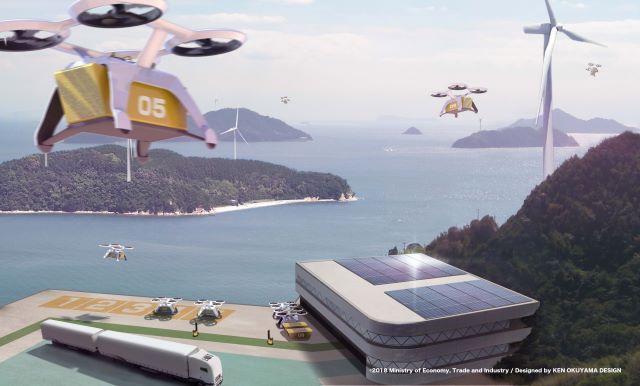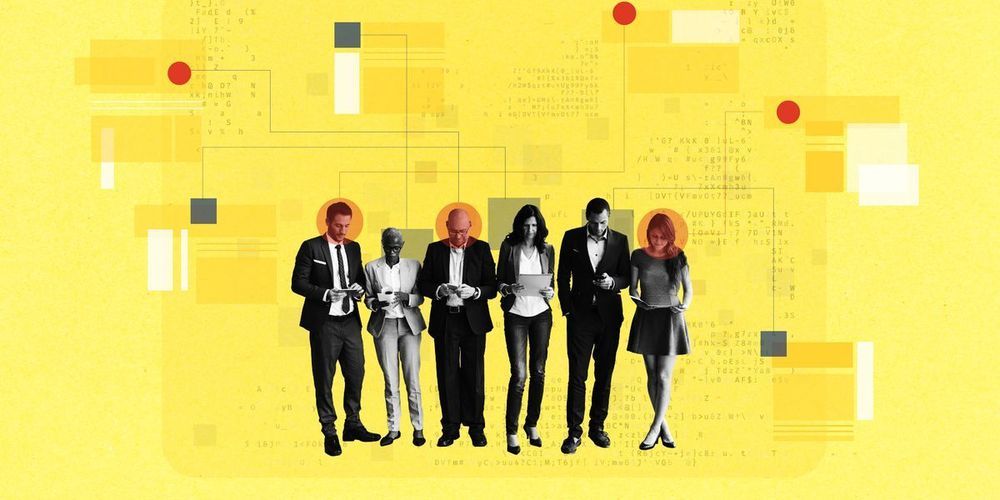Who is responsible when a robot harms a human? Robot ethics tackle this and other interesting robot issues.
Category: robotics/AI – Page 2,205
Technological Singularity — Artificial Intelligence (AI)
Human intelligence is not linear. Machine intelligence can be summed up in three words; efficiency, efficacy and trade off. The more we automate human thinking, the less we need humans. Get it?
From the subtle advancements in technology to the birth of SKYNET!!!! Join us as we explore facts about the Technological Singularity.
11. What is the Technological Singularity?
What’s that? You don’t know what it is? No worries, it is a pretty scientific term.
To quote Wikipedia, the Technological Singularity, “is a hypothetical future point in time at which technological growth becomes uncontrollable and irreversible, resulting in unfathomable changes to human civilization.“
What’s more, this is NOT a new theory or idea. And it honestly wasn’t proposed by various sci-fi movies. In fact, it was proposed by a book in 1993 via Vernor Vinge in The Coming Technological Singularity. What’s more, while this may seem like a “sci-fi future”, there are many who actually believe that not only will this come, but it could come to bear as soon as 2050.
10. Where Are We Now In The Technological Singularity?
To fully understand how the Technological Singularity could happen, we need to understand where we are as a society that could lead us to the Technological Singularity future that many fear.
9. Intelligence Boom
The key word here to note is “IntelligenceBoom”. No, I don’t mean like our own brains exploding (that would be bad…), but rather, an boom of potential via Artificial Intelligence. This is one of the potential “outcomes” of a Technological Singularity.
Think of it like this. Every generation of computer we make is technically better than the next, right? The difference between what we do and what an Intelligence Boom is, is that the A.I. is the one “making” the next generation. That’s a scary thought, huh? And that’s actually a reason why many are opposed to the research on super-intelligent (and always evolving) A.I’s. This included the late Stephen Hawking and current eccentric Billionaire Elon Musk. They feel that humanity will be doomed because of A.I’s. Whether it be through Intelligence Boom, or something of our own making.
8. Making A “Better Tomorrow“
There is another way that many dispute the Technological Singularity will come via A.I. and that’s simply by creating an A.I. ourselves that goes far beyond what we intended it to be. Which may not be as far-fetched as you might think.
If I were to say the names Alexa, Siri, and Watson, you’d recognize them as various machines with various intelligence, right? Well technically, they’re all A.I., just with different levels of intelligence. Siri came first and could react to certain things on your iPad or iPhone. Some think that we are very close to that point. Including a man named Ray Kurzweil, who believes that we could be at the Singularity point by 2045 at the earliest.
7. The Predictions Of Ray Kurzweil Part 1
If you’re not familiar with ray kurzweil, you honestly should read up on him, he’s not just another guy predicting the end of civilization, he’s actually an engineer at Google, and sees himself as a Futurist. One who has made predictions in the past about technologies advances with accuracy.
6. Robotics
When you think of the “future” that humanity “wants” and that various sci-fi and movies have “predicted”, the obvious things you see are robots and people with robotic appendages. Let’s look at robots first. The Technological Singularity notes that as robots get more advanced, humans will become less and less important. All part of the “A.I. Overlord” scenarios if you will. Then again, WE could be the robots, not unlike another robotic race with brilliant intelligence: The Borg.
5. Artificial Limbs and Cyborgs
One of the biggest and most worrying things about a person in regards to their life is the chance that they could lose a limb. The loss of a limb is something that cannot be overcome simply.
4. The Predictions Of Ray Kurzweil Part 2 ( ray kurzweil 2019)
But again, the question becomes, “How far are we from that future?” If Ray Kurzweil is to be believed, not as far as you think. For he believes a key part of the singularity will come in 2029, a mere decade in the future.
3. 2049
By 2049, humanity has become so intertwined with technology that it’s hard to tell what’s real, and what’s not. For example, there are machines in this time period according to Kurzweil that can literally make just about anything the user wants. They’re called Foglets, and they literally are around every person on Earth. They can make food so good you’ll swear it’s “natural” even though it’s not.
2. Skynet
Yep, that’s the “nuclear option”. The notion that we as humans make a technology or intelligence so powerful that it realizes one day that humanity…is actually inferior to it. To which, it’ll go to extreme lengths in order to make sure that humanity is wiped off the face of the Earth.
1. Will The Technological Singularity Happen?
That is the question, isn’t it? is Judgment Day inevitable?

Japan Aims For An Air Mobility Revolution With Flying Taxis And Mobility As A Service
In 1893, Japanese entrepreneur Kokichi Mikimoto succeeded in creating the world’s first cultured pearls in the coastal city of Toba, Mie Prefecture. Mikimoto changed the world of jewelry and launched a new industry. Today, steps away from the island where Mikimoto created the pearls, Toba is aiming to launch another new industry: flying taxis to offshore settlements. Earlier this year, NEC showed off its eVTOL flying car concept, which hovered 3 meters off the ground for about a minute. These developments are part of a global push to develop autonomous aircraft that could become a $1.5 trillion market by 2040, according to Morgan Stanley Research.

Asia’s roll-out of 5G will bring benefits across the new economy
While these “moonshots” are still some years away, there are viable applications of 5G in the near term. South Korea launched the world’s first commercial 5G network in April and has seen data transfer rates rise from 50 megabits per second to over 700 Mbps. This enables the delivery of augmented reality, virtual reality and AI-enhanced real-time sports content.
With the arrival of next-generation mobile networks, new services like remote surgery will be suddenly feasible. More immediately, expect a boom in video traffic and augmented reality content.

The Cancer Within Modern Medicine Part 5: Transhumanism
Wow, the shit flies are flying out of the trash cans of Earth… I myself do not desire the thought of man and machine becoming one literally bolted together. But only as Singularity has been now for centuries.
For centuries every technological marvel of the era man became the brain of the covered wagon the bicycle the car the train the Plane now Rocket ships.
Each machine man had to become one with it for it to work. Mans brain became machine like-calculating to operate these miracles of each generation.
NOW Suddenly on Google of all places these nay sayers with totally bogus reasoning are loudly speaking against Transhumanism and even loudly against Immortality, of which the likes of Nikola Tesla literally forcast-Prophesy…
So what say Ye about these new Johnny get your Gun and jump on what I now say is our collective vehicle and let us call our vehicle the Band Wagon.
They, so many now are joining the wave started by Who??? Many, such as the De Grey, Gennady Stolyarov, Ray Kurzweil, Jim Strole and Bernadeane and Ilia Stambler and the list could go on.
Now many garner attention by saying the same forecast the same words of Ray or De Grey then they go on tour.

China’s driverless, trackless train that runs on virtual rails launches first commercial line
China’s ART has succeeded where its “Straddling Bus” could not, launching for commercial use for the first time in the Sichuan city of Yibin.
Dubbed the “Autonomous Rail Rapid Transit,” the ART is essentially a driverless tram that runs on “virtual rails” mapped out by cameras and censors — so, it’s kinda like a bus too.
The Yibin ART T1 line extends for 17.7 kilometers. It’s expected to serve more than 10,000 passengers daily, a number that will go up to 25,000 once the line is extended to a high-speed railway station.

My Annual Conversation with Ray Kurzweil
Upcoming webinar on the state of AI with Ray.
If you can’t attend, by signing up you’ll get the entire webinar for later viewing.
Seems interesting.
Join Peter Diamandis for a conversation with Ray Kurzweil, one of the world’s leading innovators, inventors, and futurists, with a 30 year track record of accurate predictions about technological advancement.
AI-driven robots are making new materials, improving solar cells and other technologies
Decision-making algorithms transform how automated systems evaluate and synthesize novel compounds.
No driver needed: 20 tons of butter takes road trip from California to Pennsylvania
A California startup made the first cross-country trip completed by an autonomous truck, delivering 40,000 pounds of butter in under three days. The self-driving truck drove from the west coast to Pennsylvania.